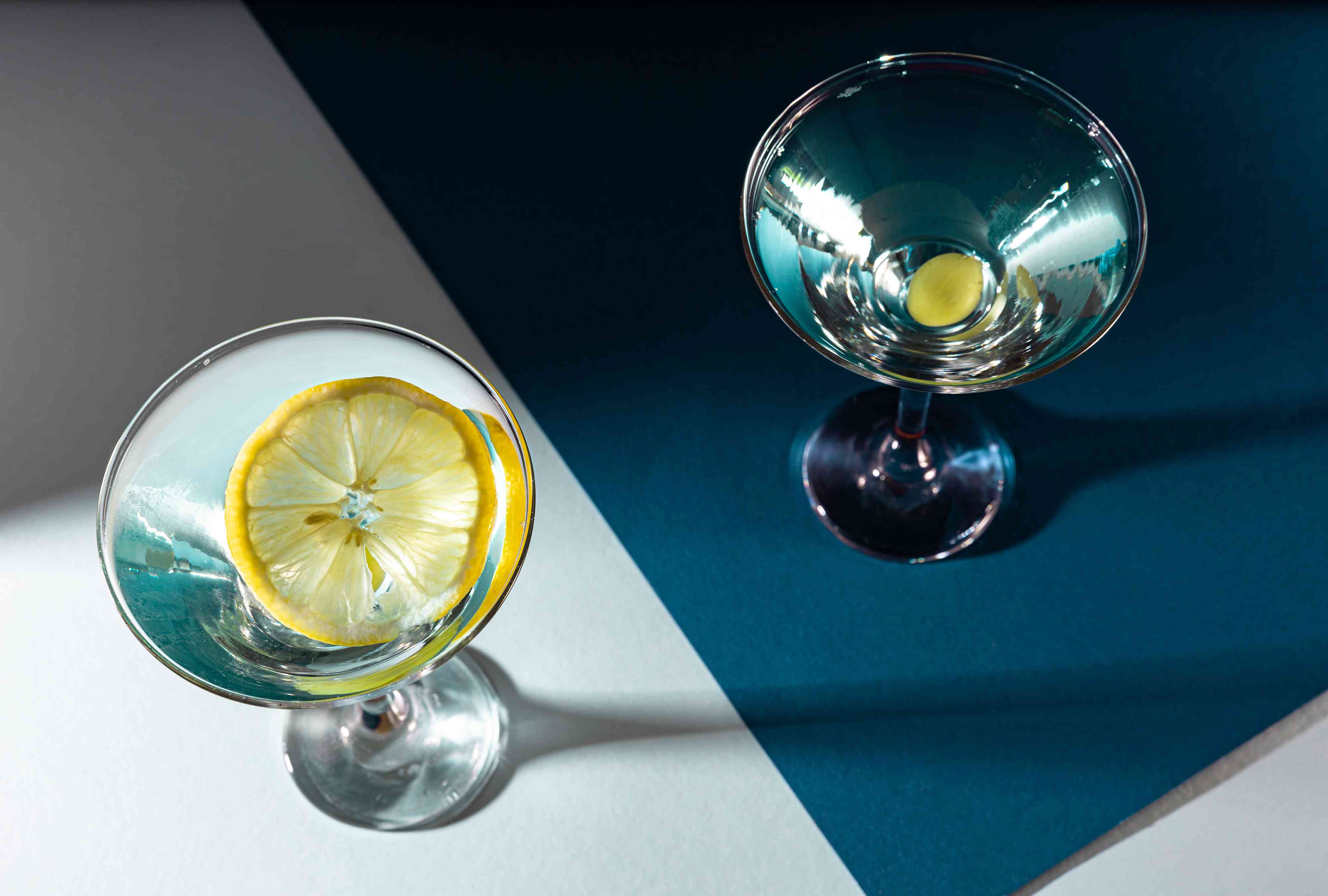
WHAT'S THE REAL DIFFERENCE BETWEEN GIN AND VODKA?
Vodka and gin are similar, but different — just ask the Martini lover in your life.
Gin and vodka may look alike, but their essential character and what they bring to cocktails are dramatically different. Because of that, there is often a fair bit of confusion about what sets them apart.
Both are fermented from the same types of raw materials and distilled as neutral spirits. But that’s where the similarities end: Vodka’s inherent character rests on its neutrality, whereas gin’s popularity is based on its ability to balance a range of botanics, juniper chief among them, but far from the only one.
Vodka vs. Gin Fast Facts
- Vodka’s neutrality makes it an excellent blank canvas for cocktails, both highlighting and absorbing the other ingredients mixed or shaken with it.
- Gin plays a more assertive role in cocktails, lending each one the distinct character of that particular brand or expression.
- Both vodka and gin can be distilled from potatoes, cereal grains, and more.
- Gin can be infused either by steeping the base spirit with what look like large tea bags full of botanicals, or by allowing the alcohol vapor to rise through baskets containing those ingredients.
What is vodka?
“Vodka is a spirit that is distilled with the intention of achieving a pure, clean flavor and great texture,” says James Bowker, global advocacy manager for House of Suntory. “It’s about high-quality raw materials and careful distillation and filtration.”
But that doesn’t mean that all vodkas taste the same. Different base ingredients, small discrepancies throughout the distillation process, and the number of times (and how) a vodka has been filtered can leave their mark on the final character of the liquid in the bottle. The water source used to bring the vodka down to the desired alcohol by volume also has a significant impact.
As for the old belief that all vodka is potato-based, that’s just not the case: Excellent ones are crafted from cereal grains, quinoa, grapes, and more.
Related: Understanding the 4 Main Types of Gin, According to Experts
What is gin?
Gin also begins with a neutral spirit, but then is flavored with botanicals, juniper chief among them.
Distillers achieve this either by steeping the neutral spirit with what essentially looks like a giant tea bag or cheesecloth filled with botanicals (after which the spirit is then redistilled), or by placing the botanicals on a series of baskets in the still, which allows the alcohol vapor to pass through them and flavor and aromatize the resulting spirit for that particular distillation.
As the gin category has grown, the range of botanicals that different brands use has also expanded. In addition to juniper, orris root, angelica root, coriander, cardamom, and citrus, you’re also likely to see more terroir- or location-specific ones such as seaweed, mushroom, butterfly pea, saffron, coul blush apple, and more. Some producers even employ full- or part-time foragers to find local botanicals for their gin.
Related: 15 Exceptional Vodka Cocktails, From a Vesper to Martini Variations
How do vodka and gin differ in cocktails?
In cocktails, vodka and gin serve very different purposes.
Vodka tends to either highlight the other ingredients in the drink or take on their flavors, amplifying them. The most famous exception to this is the dry vodka Martini, which allows the character of the vodka to take center stage, so choose carefully! Gin, on the other hand, often plays more of a starring role, and even when it doesn’t, its constituent botanicals must be considered in terms of how they’ll get along with the other flavors in the drink.
“When creating a cocktail list, I’ll use vodka as a blank canvas, an alcoholic backdrop for fresh seasonal flavors or secondary spirits and liqueurs,” says Emily Parian, bar manager at Empress by Boon in San Francisco.
“For gin cocktails, I’ll often choose a particular gin based [on] its own flavor profile, whether [it’s] juniper or citrus forward, floral or fruity and [then] incorporate those in the overall experience,” she says. “I’ll use seasonal ingredients and various other spirits to enhance and complement the particular gin.”
Ultimately, the differences between these two spirits are significant, but high-quality examples of both provide the opportunity to enjoy either of them on their own or in a cocktail.
For more Food & Wine news, make sure to sign up for our newsletter!
Read the original article on Food & Wine.
2024-05-08T14:23:22Z dg43tfdfdgfd